Living Planet
Nature · Earth · ClimateNATURE NOTES: OCTOBER 2022
THE CROWN JEWELS
After the dramatic thunderstorms which heralded the start of September, Autumn rolled in with regal ease, crying poignant silent tears of rain which helped to replenish our rivers and streams, bring forth lush green grass again for the animals in our fields and swell our blackberries, plums, sloes and other seasonal fruits. The tapestry of colour in our hedgerows contrasted strongly with the darkness of ritual mourning - it didn't seem long ago we were celebrating our Queen's Platinum Jubilee. A comforting blanket of harmonising hues wrapped its season around us, whether picking out its highlights in shafts of sunlight or set against a more sombre outline of bleak dark clouds. Sepia tinges on apple green, golden syrups and soft chocolately browns blended with damask reds, pumpkin-dusks, harp-string golds and blushes of crimson.
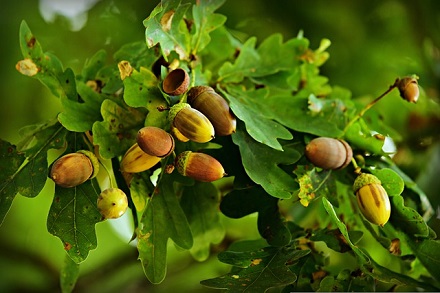
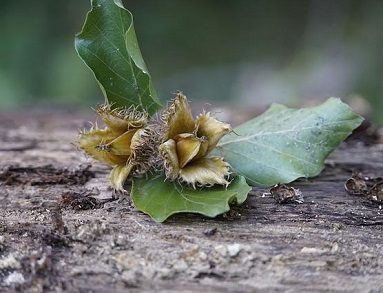
There were 4 splendid royal crowns involved in events around the Queen's funeral but amber- emerald acorns, deep mahogany thee sided nuts (encased in furry flower-like beech husk casings), inky blackberries and ruby red rowan berries set in hedges of green, were the much-prized jewels of animals and birds in natures crown - the beech nuts also attracting the first flocks of bramblings from other shores. As I write we don't know how many of this years' seeds are 'viable' and will grow into seedlings because of the stress the trees have been under with high temperatures and drought. Many are still adorned in their finery, although the yellow gold leaves that fell during 'false autumn' have now turned bronze or copper. As a larder of aromas waft from the hedgerows, still strung with beads of fruit, and the smell of both soft loamy earth and hard clay hang in the damp air, the light gold, fire-tinged leaves of splendour will start to burn ember red before their final dance down to their own red carpet, where, like many others who've fallen, each will enrich the soil and contribute to new life beneath ...
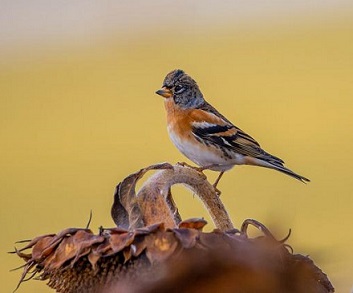
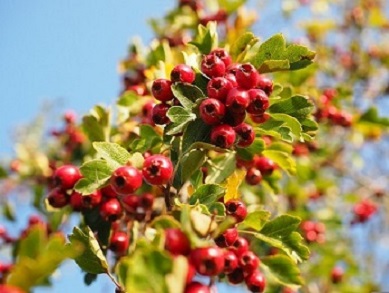
This season has already been incredibly plentiful with buried treasure troves of gems popping up around our feet, as the reproductive fruit bodies of fungi and mycelium exploded out of the earth in all shapes and sizes, shades and textures, to release their millions of spores. Bubbling buttons of tangerine cream trim edges of bright green velvet moss covered tree-stumps, beads of dew on crimson 'fingers' amongst the leaves shone like diamonds as they caught the sun, yellow flute-like chanterelle twirled, and to accessorize, beautifully decorated extended Parasols stood tall in the fields, sheltering insects from sun and rain. Even their long slender stems with snakeskin markings bore a double ring which could be moved up and down!
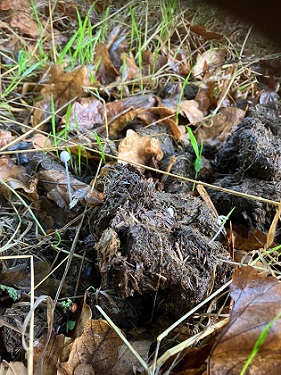
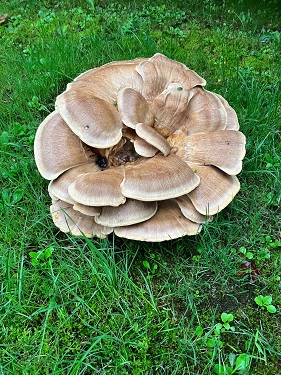
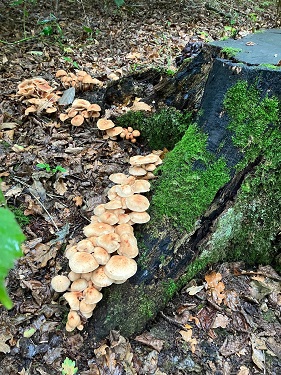
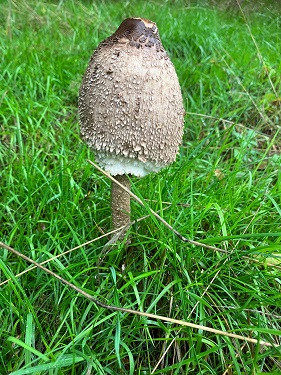
Fashion has long taken its inspiration from nature and this year Sarah Burton, the creative director of Alexander McQueen (HRH the Princess of Wales, Kate Middleton's favourite fashion house), unveiled an Autumn/Winter collection based around mycelium, the filaments of fungi that 'connect' trees underground, relaying messages, water and nutrients. Textiles are dyed in bright block colours of acid yellow, tomato red and tangerine, all based on mushrooms and fungi.
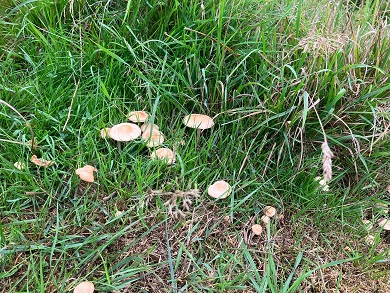

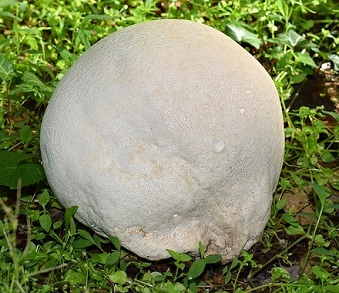
Our dear Queen was also a fan of vivid colours and resplendent accessories and as lime green bodied southern hawker dragonflies, still flit in and out of sunbeams to alight on vibrant red rosehips, they sparkle - motionless for a moment, reminiscent of one of her brooches. Wagtails, dip down to skim the water on troughs in between thirsty tongues of cows, where only six weeks ago, during the heatwave, Egyptian geese swam and soon newts will be on the move as they hibernate close to their old rain refreshed breeding ponds. Sloe bugs, a type of shield-bug much the size of cufflinks, currently stud the hedgerows where they're 'shielding' sloes, damsons and other fruits in their noble purple-brown armour disguise. If amplified in size their splendid greenish 'shield' with chequered black and white trim and antennae wouldn't look out of place hung alongside a suit of armour in a medieval banqueting hall!
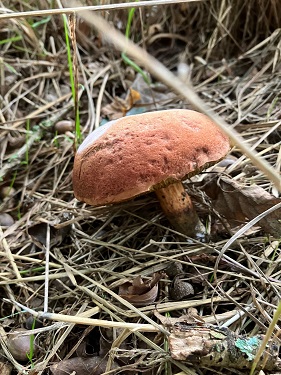
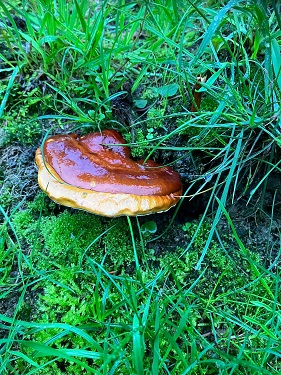
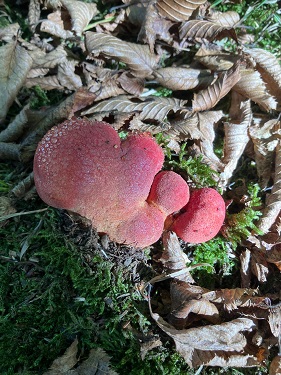
Black and white, also seen in the ermine trimming the royal crowns, are not colours normally associated with Autumn but they're very much a part of its make-up. There have been ten white pigeons amongst a regular 'grey' flock alighting on our fields and if you're lucky you may also spot the bright white belly and rump of a brambling in flight or the brown and white underparts of the odd osprey stopping off at our lakes on its way to the African coast. It's National Badger Day on 6th October 2022, and this is the month when they're actively preparing for the winter by excavating their setts and bringing in fresh bedding material. On the same level, in amongst the grass and some of our deciduous woods, the pure velvety white of giant puffballs seem to glow in the faltering light. Now we've passed the Autumn Equinox when night is evermore encroaching upon day, incredible starling murmurations will increase in our skies until the strained light of the fading autumn moon creates a dome of soft glow through evening mists. Tawny owls will become more vocal as they re-establish their territories and soon the unmistakable gaggle of white-fronted geese from Greenland's arctic tundra and pink-footed geese, arriving from Iceland, will be seen and heard overhead, with bearded tits, gold finches and siskins also flying in, more unobtrusively, from Europe.
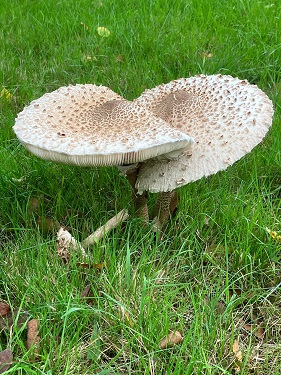
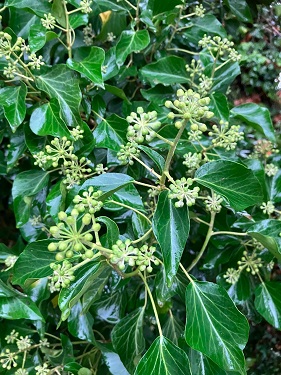
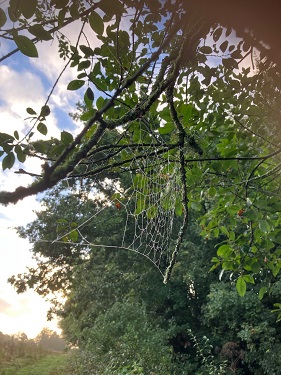
In the darker evenings, as the autumn chill descends, we can look forward to golden fires spluttering to life and roaring in our grates once more. As we roast chestnuts, and sample other treasures from nature's larder let's raise a toast to the memory of our Queen and a drink to our new King Charles III, another well-known lover of the countryside.
Maybe we could 'take a leaf' out of our new Kings book and try talking to plants and shaking hands with trees, not least to remind us to respect all living things but also to give thanks for the rich bounty, comfort and nurture that nature provides.
Long Live the King!